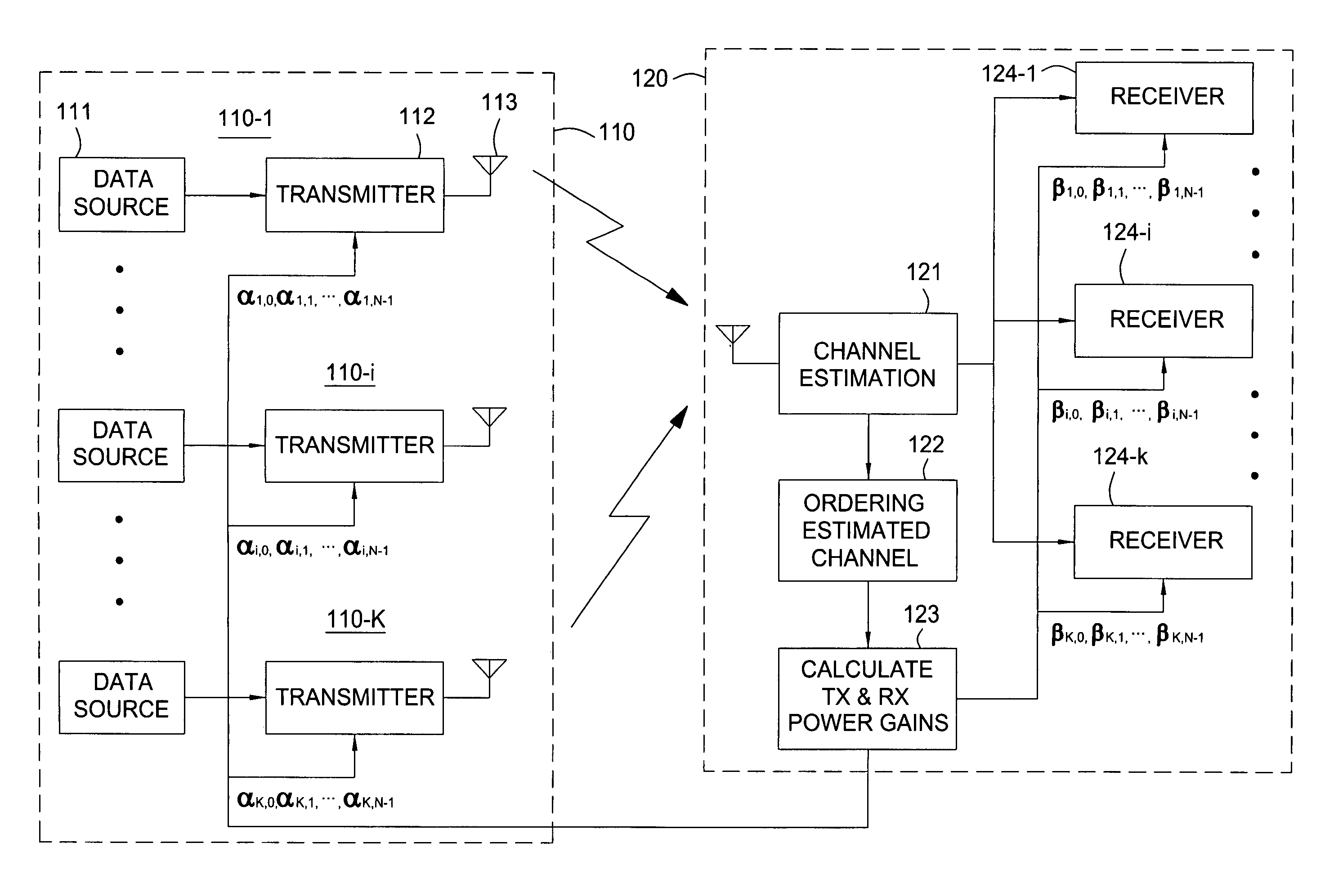Combined frequency-time domain power adaptation for CDMA communication systems
a technology of cdma communication system and frequency-time domain, applied in power management, multi-frequency code system, wireless communication, etc., can solve problems such as inability to implement, increase system complexity, transmission outages, etc., and achieve significant performance gains
- Summary
- Abstract
- Description
- Claims
- Application Information
AI Technical Summary
Benefits of technology
Problems solved by technology
Method used
Image
Examples
Embodiment Construction
[0024]In the description that follows, certain terms are used interchangeably. The term “user” may be interchanged with the terms “mobile”, “mobile station”, and “mobile user”. The term “base station” is also used interchangeably with the term “base”. The terms “transmit power” and “transmission power” are also used interchangeably. These usages are not intended to be limiting in any way.
[0025]The description below is organized as follows. A system model is introduced and together with a derivation of the signal-to-interference-plus-noise ratio (SINR) of the received signals with maximum ratio combining (MRC). Next, the power adaptation techniques are described and resulting bit error rate (BER) performances are analyzed. Finally, numerical results are presented with a discussion of the performance improvements provided by present transmit power adaptation techniques.
[0026]In the description below, transmission power adaptations are presented along the frequency domain, the time dom...
PUM
 Login to View More
Login to View More Abstract
Description
Claims
Application Information
 Login to View More
Login to View More - R&D
- Intellectual Property
- Life Sciences
- Materials
- Tech Scout
- Unparalleled Data Quality
- Higher Quality Content
- 60% Fewer Hallucinations
Browse by: Latest US Patents, China's latest patents, Technical Efficacy Thesaurus, Application Domain, Technology Topic, Popular Technical Reports.
© 2025 PatSnap. All rights reserved.Legal|Privacy policy|Modern Slavery Act Transparency Statement|Sitemap|About US| Contact US: help@patsnap.com



